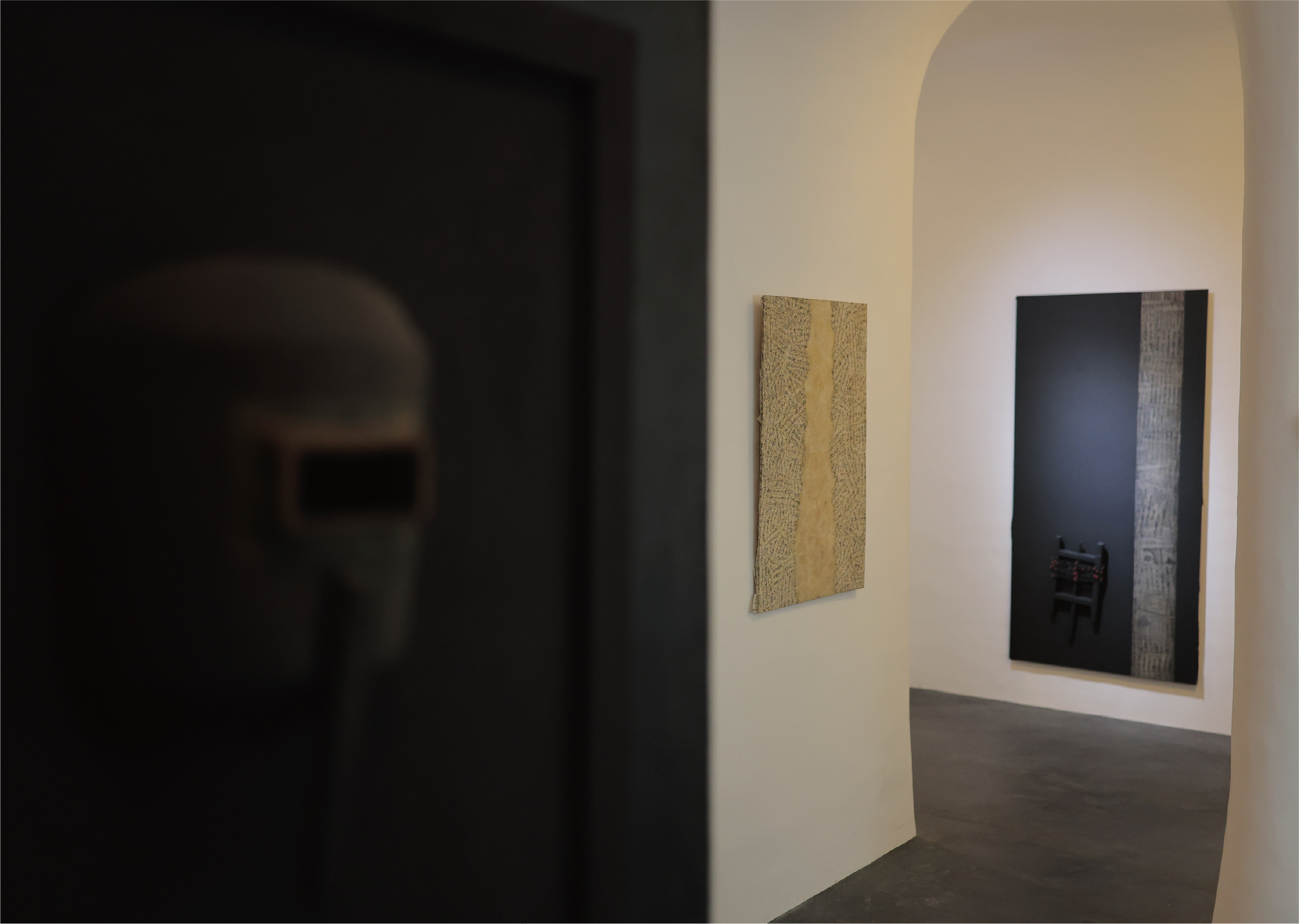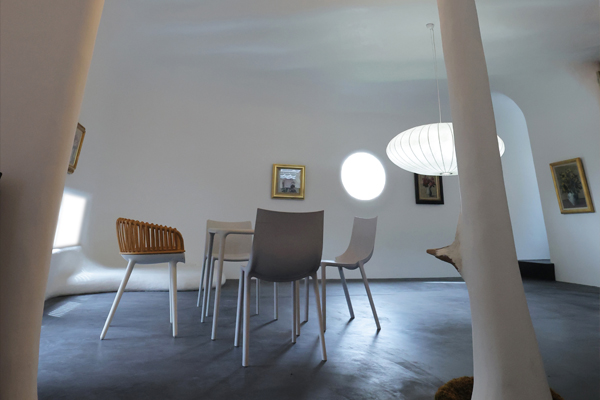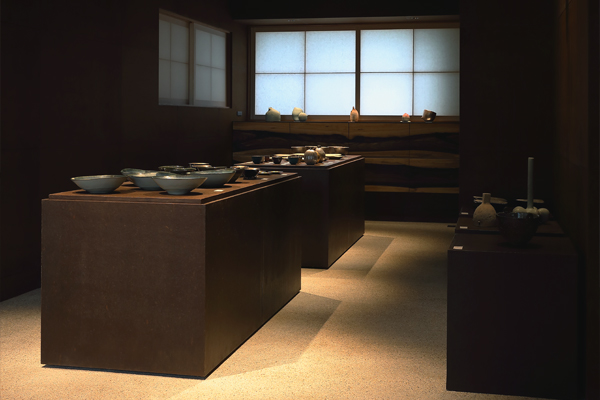アートホリックな空間。
Feature | 2025.11.24
アートと一緒に暮らす、という話。
ギャラリーや芸術系のサイトでお気に入りの作品を購入する人がいる。
部屋に飾ればいつもの空間にアクセントが生まれ、日々がポジティブになる。
日常を潤してくれる、そんなアートの力を多くの人に届けたい、
そして自分もそんなアートに囲まれて生活したい。
アートが好きで、アートと暮らしたくって、ギャラリーをつくった人がいる。
今回のyoffでは自宅をギャラリーにした人を訪ねた。
この号を読んで、アートと一緒に暮らす楽しさを知ってもらえると嬉しいです。
On living with art.
Some people buy their favorite artwork from galleries or art-related websites.
Displaying them in a room adds an accent to the everyday space, making daily life more positive.
Driven by the desire to share this power of art,
which enriches daily life, and to live surrounded by such art themselves, some people have created their own galleries.
In this issue of yoff,
we visit a person who turned their own home into a gallery.
We hope that reading this issue
will help people discover the joy of living with art.

アートを鑑賞するだけでなく「暮らしに取り入れる」人が増えている。
かつては一部の富裕層の楽しみだった美術品の購入も、
いまでは感性を大切にする人々の新しいライフスタイルとして広がりつつある。
アートが売れることはアーティストの創作を支え、文化を循環させる。
その流れを受けながら、「アートが好き」を突き詰め、
そのアートとともに暮らすためにギャラリーを立ち上げる人がいる。
個人の夢とこだわりが形になったギャラリーである。
Increasingly people are appreciating art and making it a part of their everyday life.
Once a pastime of the privileged few, buying art is now spreading as a new lifestyle for those who value sensibility.
When art sells, it sustains artists’ creativity and keeps culture in motion.
Riding that wave, some pursue their love of art to the fullest and open galleries so they can live with the art.
These galleries give tangible form to personal dreams and obsessions.
最近、美術館やギャラリーに足を運ぶ人が増えているように思う。ゴッホやモネの印象派、国宝級の仏像、北斎や広重の浮世絵といった人気の企画展ともなれば長蛇の列ができるのも珍しくない。
最近は鑑賞するだけではなく、アートを「買う」人も増えている。純粋に楽しみたい人もいれば、投資として扱いたい人もいる。動機はさまざまだが、アートが売れればアーティストに収入が入り、創作の循環が生まれる。これはとても健全なこと。
アートを市場に流通させる役割を担ってきたのが画商である。職業としての画商が登場したのは17世紀のオランダ。商業と金融の発展で市民が豊かになり、美術品を所有することがステータスとなった。18世紀に入ると、フランスやイギリスでサロンやギャラリーといった公共空間が登場し、そこでは画商が作家と顧客を繋ぐ存在となった。その仕組みは、今も大きくは変わっていない。
気に入った作品を見つけたら、多くの人に知ってもらいたい。その思いがあるからこそ、作品を紹介する場が必要になる。ならば自分でギャラリーをつくってしまえばいい。自分が好きな作品を展示し、多くの人に見てもらい、作品が売れればアーティストは喜び、自分も満足する。そんな「言うは易く行うは難し」を、さらりと実践している人がいる。
ひとりは、岡山・足守の陣屋町の風情漂う場所で現代美術を扱い、もうひとりは流行が生まれる東京・代官山で工芸品を紹介している。
好きが高じて、ついには美術品のための空間までつくってしまう。その情熱は、ときに酔狂と見られるかもしれない。だが、夢を形にする力とこだわりにあふれたギャラリーに、うらやましさを覚える人は多いと思う。
The number of people visiting museums and galleries is definitely on the rise.
It is not uncommon to see long queues for popular exhibitions featuring Impressionists like Van Gogh and Monet, national-treasure-class Buddhist statues, or Ukiyo-e prints by Hokusai and Hiroshige.
Beyond appreciation, more people are now buying art (for enjoyment or investment). This circulation is healthy, as it provides income for artists and sustains the creative cycle.
The role of circulating art in the market has historically been carried out by art dealers. The profession of art dealer first emerged in 17th-century Holland, where the development of commerce and finance enriched the citizenry, making art ownership a status symbol. By the 18th century, public spaces like salons and galleries appeared in France and England, where dealers served as the crucial link between artists and customers. That fundamental structure remains largely unchanged today.
When people find a piece they love, they want to share it with many others. This desire necessitates a place to introduce the work. Thus, some decide to simply create their own galleries. They exhibit the works they love, share them with the public, and if the work sells, the artist is happy and they are satisfied. There are people who effortlessly implement this “easier said than done” approach.
One individual deals in contemporary art in the atmospheric Jinya-machi (historical district) of Ashimori, Okayama, while another introduces craftworks in the trendy, trend-setting neighborhood of Daikanyama in Tokyo.
This intense passion to create an art space may seem eccentric, but the commitment to realizing their dream results in enviable galleries.

閲覧中の特集はこちら





